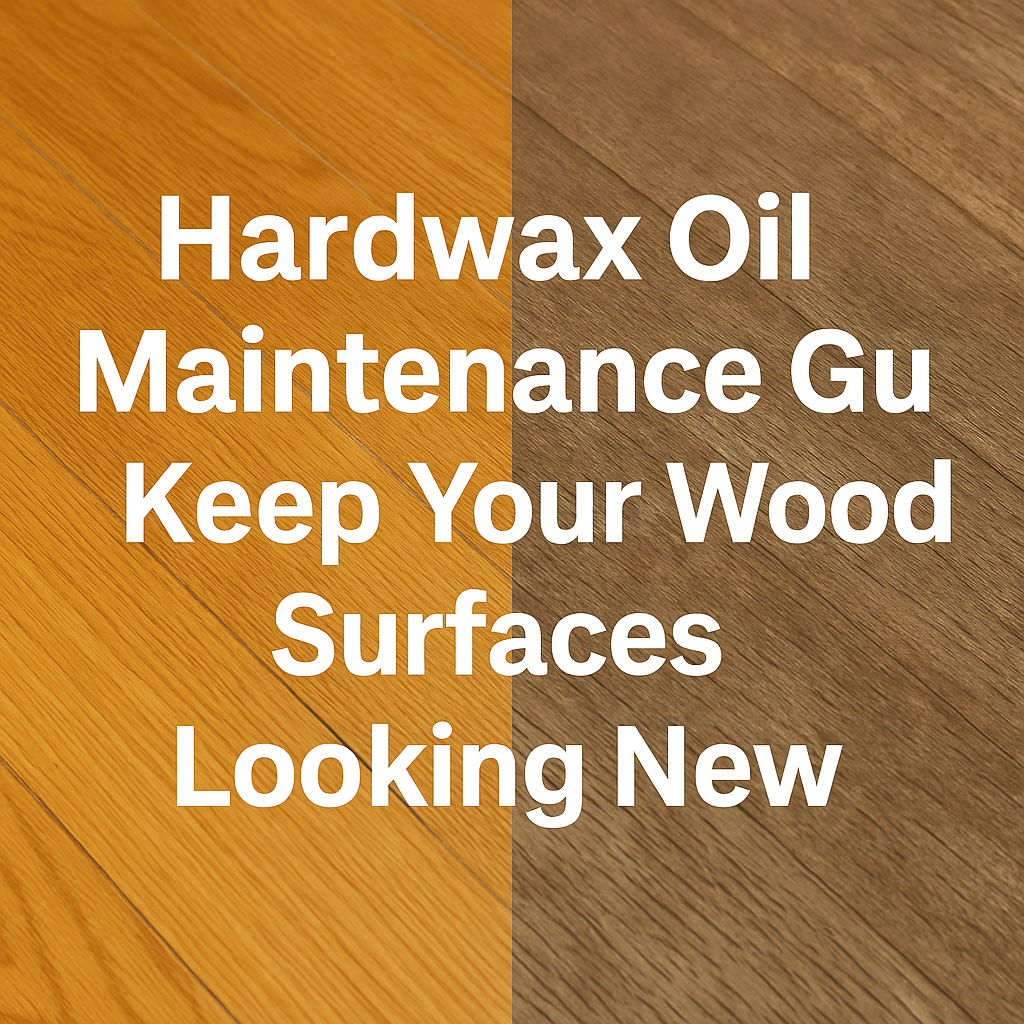
Hardwax Oil Maintenance Guide: Keep Your Wood Surfaces Looking New
Share
If you’ve recently treated your wooden surfaces and are wondering what comes next, understanding hardwax oil maintenance is your key to long-lasting beauty and performance. Hardwax oil-treated wood offers a warm, matte look and breathable protection—but it needs a touch of care to stay that way. Without proper upkeep, even the most elegant finish can dry out, become dull, or lose its resilience.
In this guide, you’ll discover everything from daily cleaning habits to deep care routines. Whether you're maintaining hardwax oil floors, countertops, or furniture, these tips will help preserve the natural look, feel, and integrity of your surfaces for years to come.
Just applied hardwax oil? Here’s how to care for it.
Why Proper Hardwax Oil Maintenance Is Essential
Maintaining your hardwax oil finish isn’t just about appearance—it’s also about protection. Here’s why consistent care matters:
- Preserves the natural look and texture: The subtle sheen and tactile warmth of hardwax oil can fade if neglected.
- Boosts durability: Proper care enhances the protective properties, reducing wear and tear.
- Prevents drying and cracking: Regular maintenance keeps the wood moisturized and flexible.
- Reduces frequency of full reapplications: A maintained finish lasts longer, saving time and money.
Routine Maintenance Tips
Regular upkeep is key to extending the life of your hardwax oil-treated surfaces. Here’s how to keep things fresh without overdoing it.
1. Use the Right Cleaning Products
- Avoid harsh cleaners like ammonia, bleach, or acidic vinegar.
- Opt for pH-neutral wood cleaners or special hardwax oil soaps.
- Wipe spills immediately to prevent staining or absorption.
2. Clean Regularly but Gently
- Sweep or vacuum weekly to remove grit that causes micro-scratches.
- Mop sparingly with a barely damp cloth—excess moisture can seep in.
- Avoid steam mops or soaking.
3. Refresh the Finish Occasionally
- Apply a maintenance oil every 6–12 months or as needed.
- Spot-treat areas with heavy use (like entryways or dining chairs).
- Don’t over-apply—thin coats are always better.
4. Protect from Scratches and Moisture
- Attach felt pads to chair and table legs.
- Place doormats at entryways to reduce grit.
- Keep humidity between 40–60% to prevent shrinkage or warping.
Deep Maintenance & Re-Oiling
Even with routine care, reapplying hardwax oil eventually becomes necessary. Here's how to recognize when it’s time and what to do.
When Should You Reapply?
Look out for:
- A dull or faded finish
- Surfaces that feel dry or rough
- Stains or spots that won’t clean off
How to Re-Oil the Surface
- Lightly sand if the surface is rough or uneven.
- Clean thoroughly to remove dust and debris.
- Apply a thin coat of maintenance oil, spreading it evenly with a pad or cloth.
- Buff lightly and let dry for 4–8 hours before light use.
Mistakes to Avoid When Maintaining Hardwax Oil
Many wood owners accidentally damage their finish by cutting corners. Watch out for these common pitfalls:
- Using ammonia, bleach, or acidic cleaners
- Applying wax-based polishes, which can interfere with oil absorption
- Letting water stand on the surface for too long
- Not allowing enough drying or curing time after a re-oil
Here's a helpful checklist to follow:
FAQs About Hardwax Oil Maintenance
How often should I maintain hardwax oil finishes?
Light cleaning weekly, and a refresher oil every 6–12 months, depending on traffic and exposure.
Can I use vinegar to clean hardwax oil floors?
No. Vinegar is acidic and can damage the oil layer. Use pH-neutral cleaners instead.
What’s the best cleaner for hardwax oil wood?
Look for a specialized soap or wood floor cleaner labeled safe for oiled surfaces.
Do I need to sand before reapplying hardwax oil?
Not always. Only sand if the surface is rough, uneven, or heavily stained.
How do I fix dull patches on hardwax oil floors?
Clean the area and spot-treat with a small amount of refresher oil using a lint-free cloth.
Hardwax oil maintenance may seem minimal, but the impact is major. With the right products and a simple routine, your wood floors, furniture, and surfaces will remain stunning, resilient, and protected for years.

